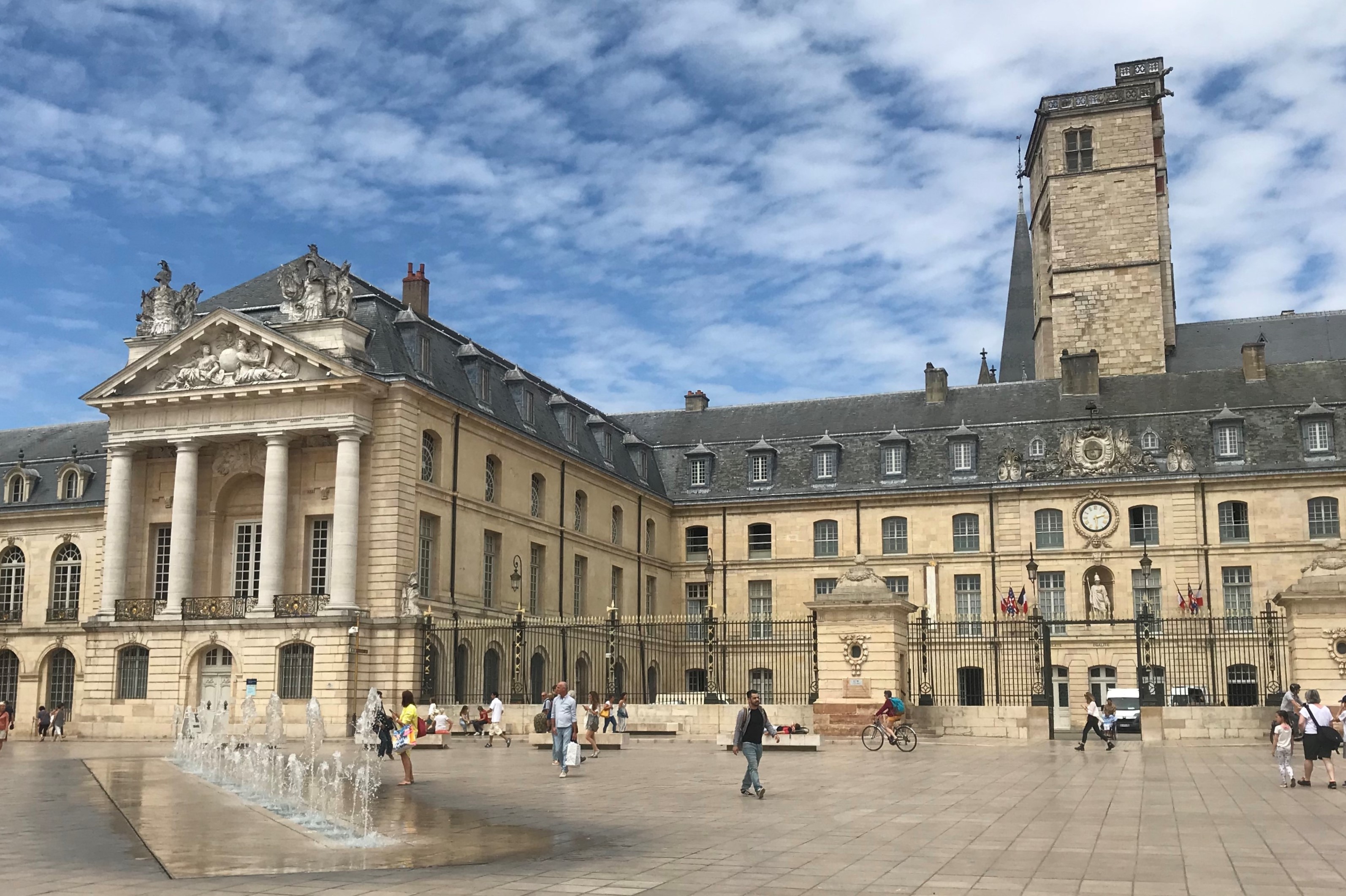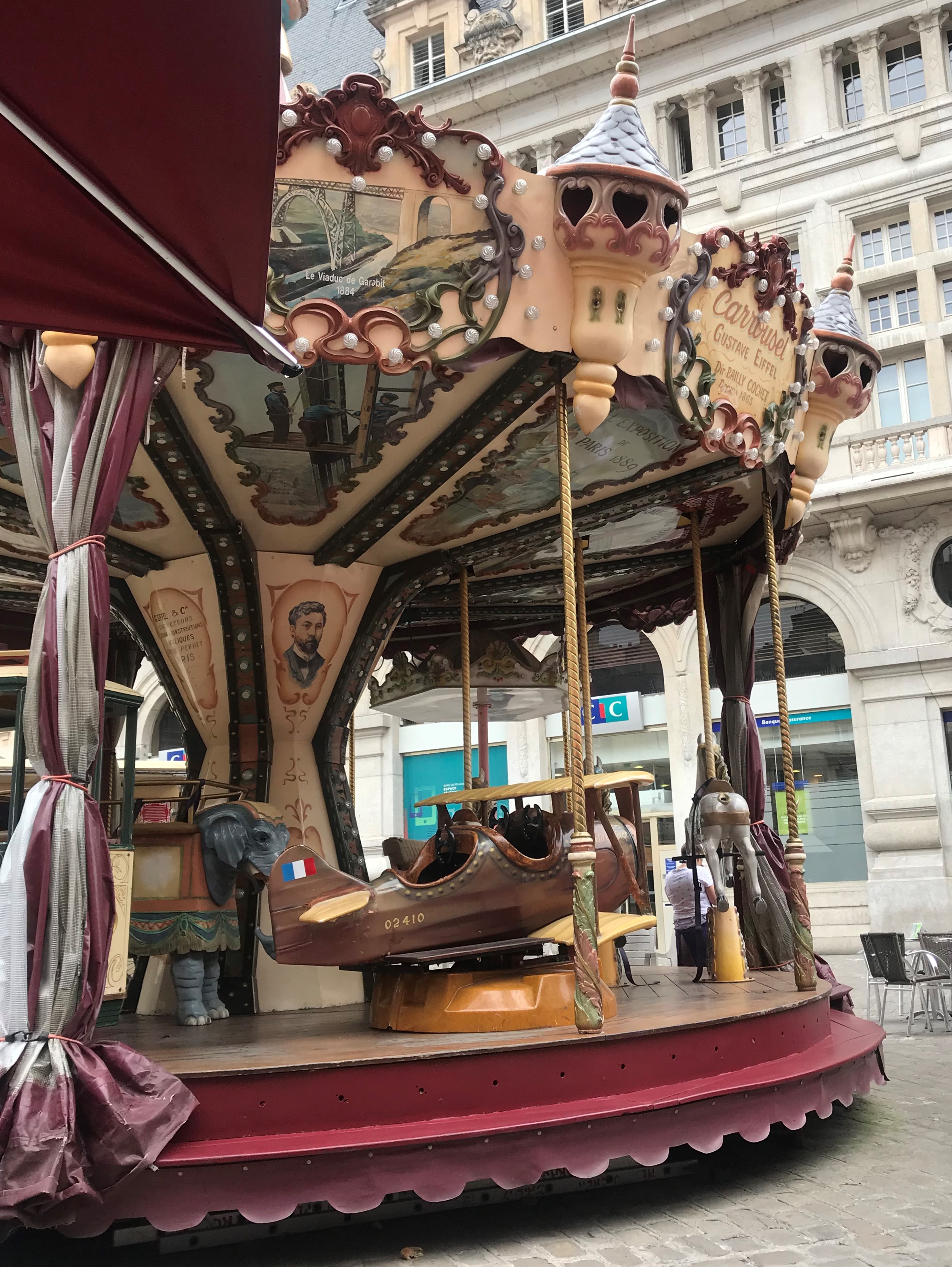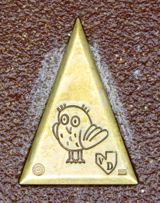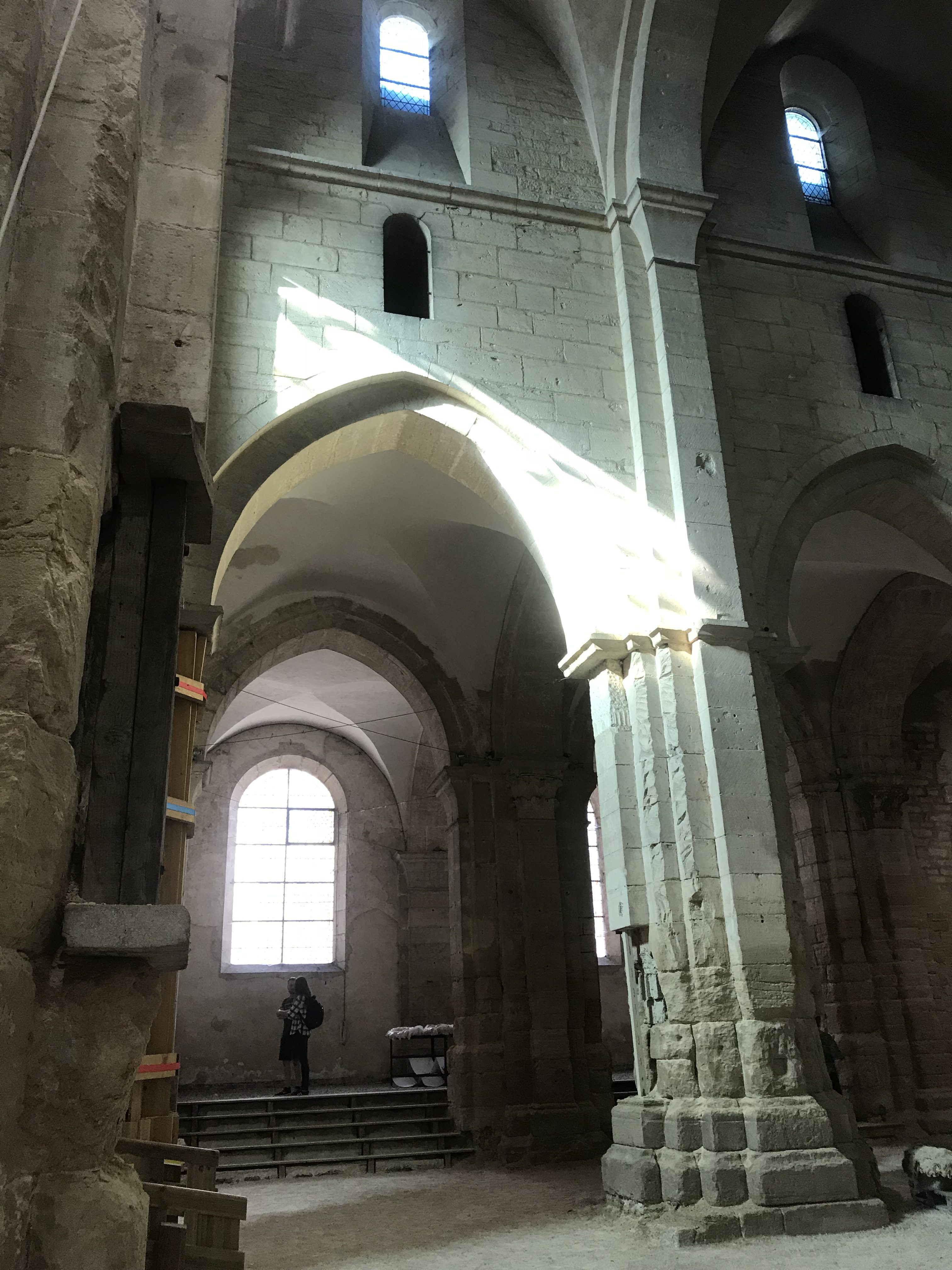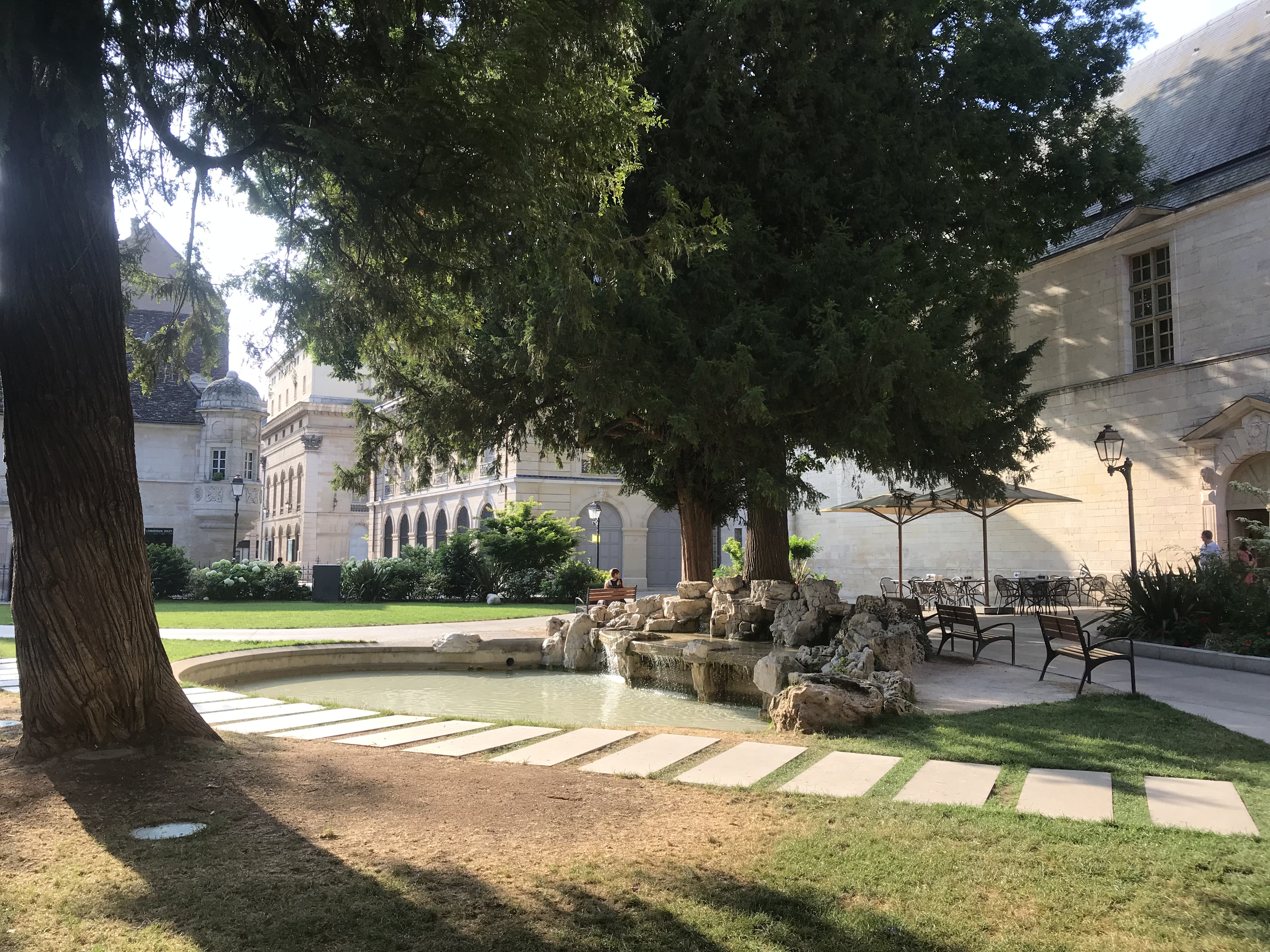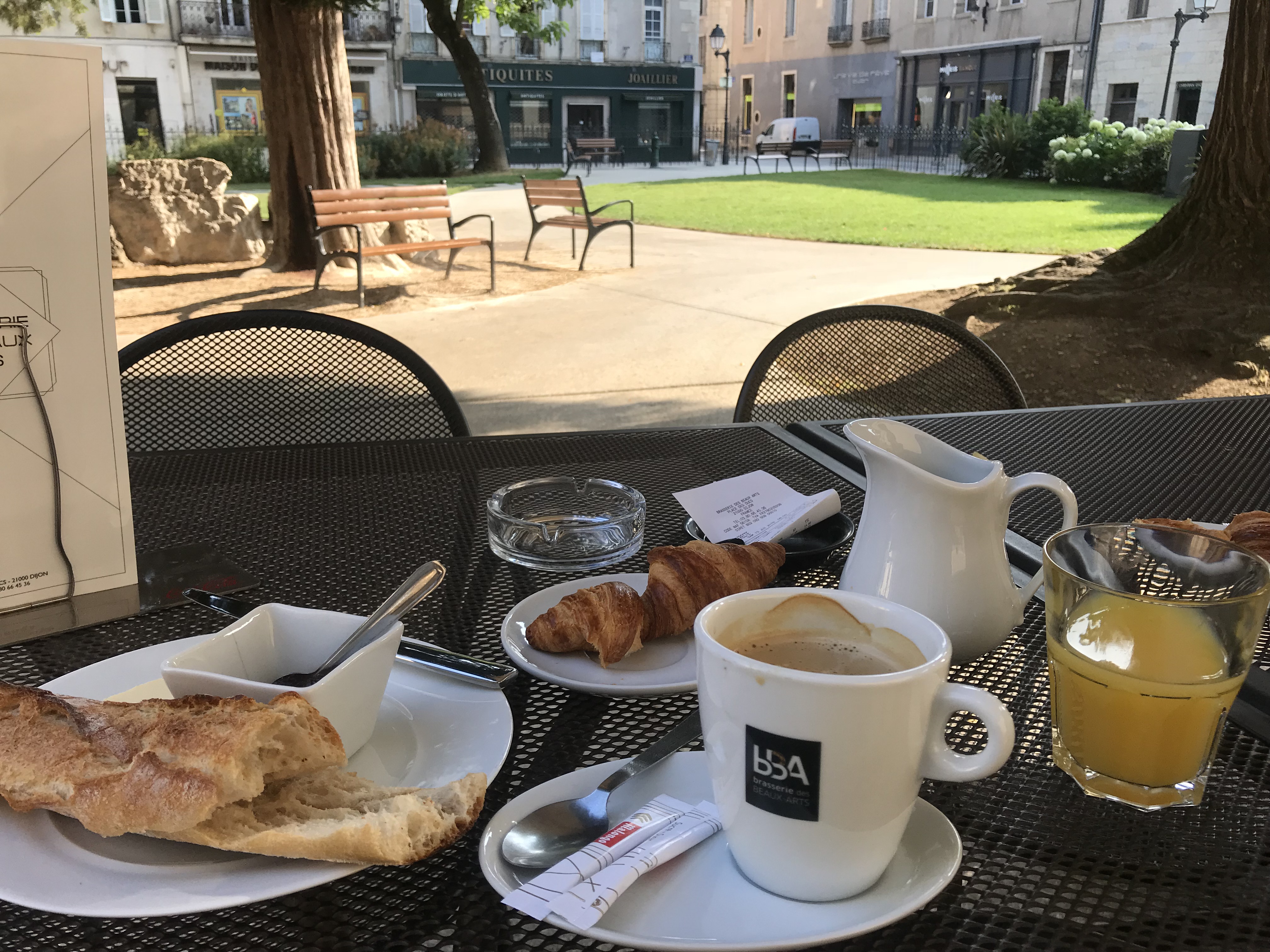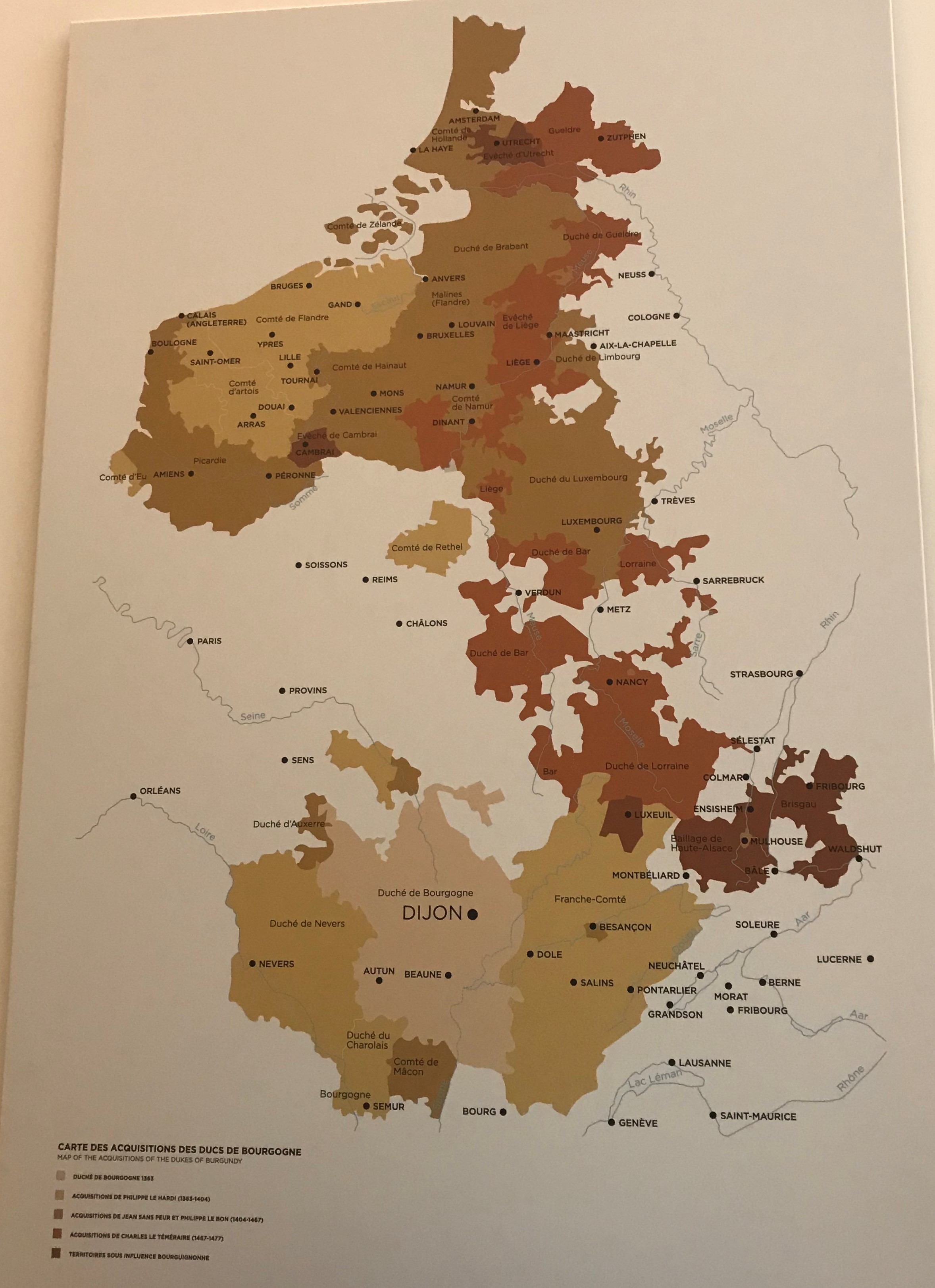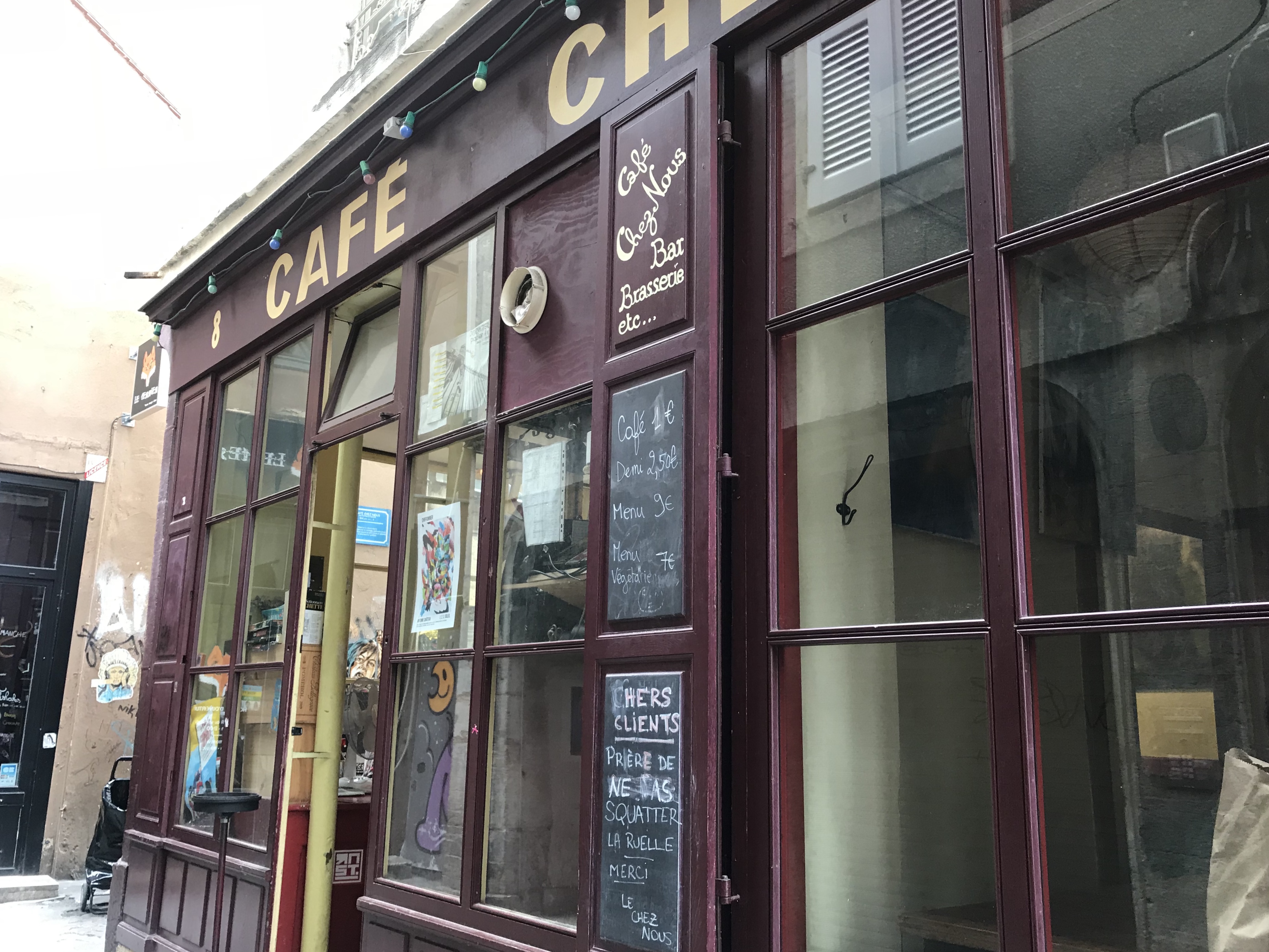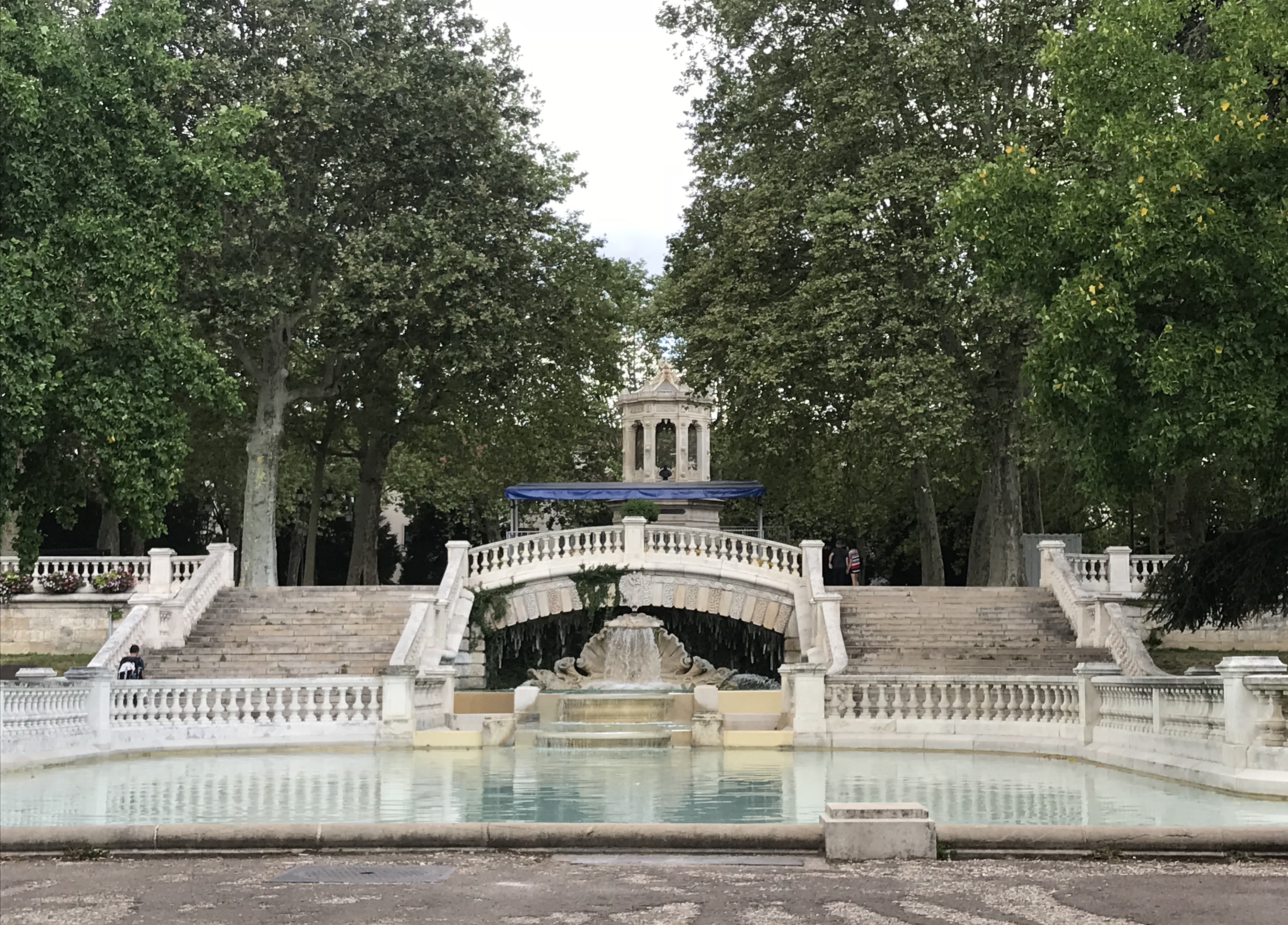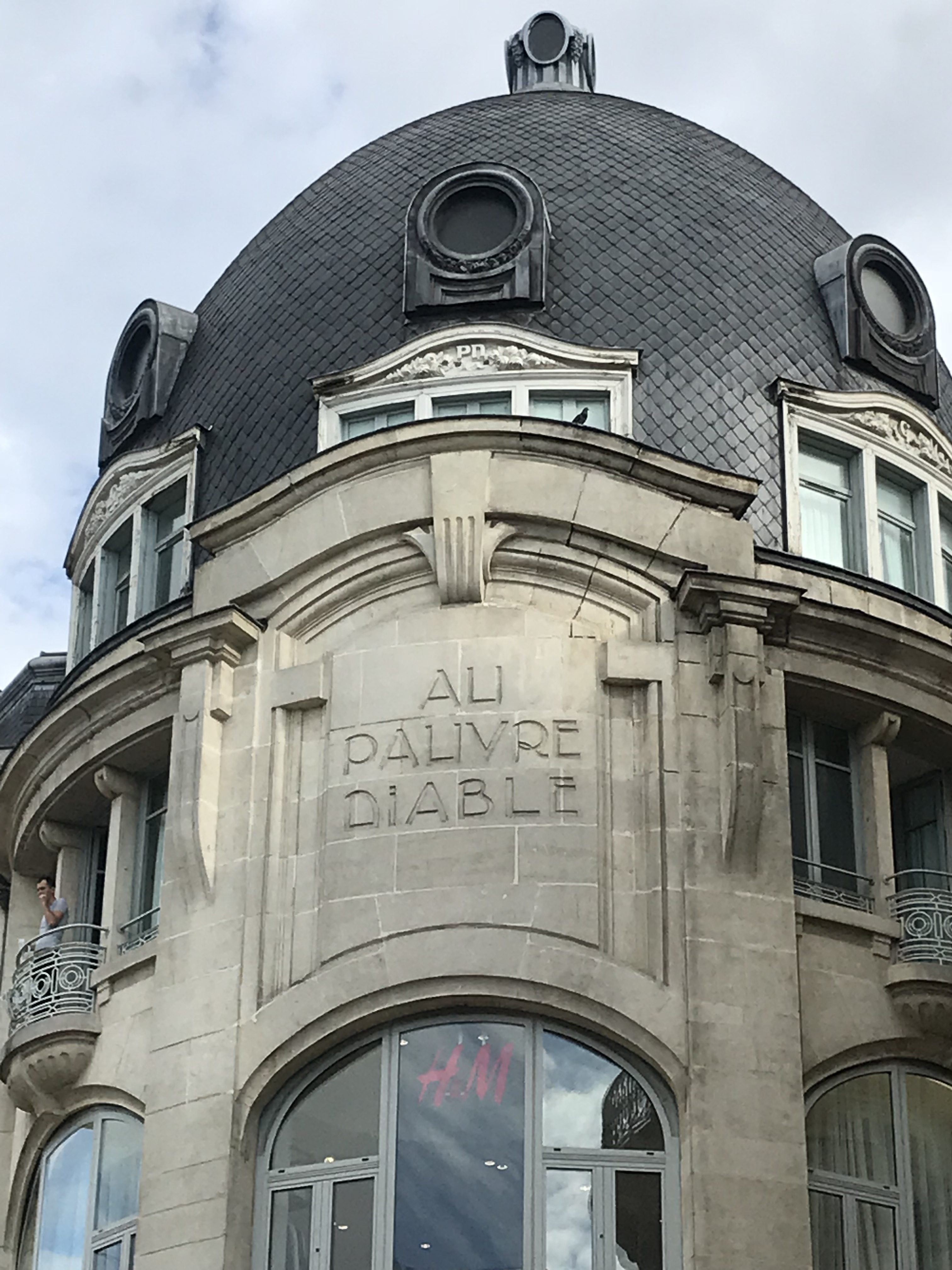We take the train from Gare de Lyon in the south east corner of Paris, and head towards Switzerland. But we are not going so far – we are on our way to Dijon. Our journey will be an hour and a half. We pass flat acres of corn, an occasional river and now and then a small village with red roofs and a church spire.
It’s still hot but the sky is grey and the air is heavy. We are optimistic travellers and hope the weather stays dry. We have not come prepared for rain.
Gradually the landscape changes. It is getting a bit hillier. A few dark forests. Villages now ‘nestle’ in valleys, or straggle up the sides of inclines. The houses look more Germanic, higher roofs, bits of dark wood – verging on the chalet-like. I feel a Julie Andrews moment coming on.
We alight at the station and walk out into the wide forecourt. What a calm, clean place Dijon is, small but perfectly formed – a lot of golden creamy stone and stories of Dukes and Duchesses. The historical centre of the city has been registered since July 4, 2015 as a UNESCO World Heritage site.
Dijon is the capital of the Côte-d’Or département in the Bourgogne-Franche-Comté region and as well as mustard it is famous for its churches. Our hotel is next to the Cathedral and we are prepared for religious drama.
We have lunch in Place Rude, where C has Eggs in an Epoisses cheese sauce. I have a taste – this version is not unlike a savoury Ambrosia Rice Pudding without the rice. I have ham with parsley. It is a terrine with parsley laced through it. And very nice. Washed down with a glass of Petit Chablis (a poor person’s Chablis, I understand).
We sit beside a small roundabout designed, apparently, by Gustave Eiffel (or Mr Tower, as we should call him).
In Dijon there is an ‘owl trail’ – little brass/bronze owls in the pavements point the way round the city centre with stories about the buildings and squares. We go to Tourist Information and buy a helpful booklet (‘hibou,’ I say, practising my French. ‘Non, chouette,’ corrects the assistant – it’s female), then we follow the signs
to discover a little of the town – watchtowers and museums, cellars and walls. We pass the ‘roofless’ house – where, legend has it, a pie-maker made delicious paté, but one day a child’s finger was discovered in his wares. The pie-maker was put to death, of course, and the roof of his house removed.
We venture into the 12th Century church of Saint Philibert, beside the cathedral, right by our hotel. It is an empty shell, its pillars and arches propped up with intricate wooden structures and odd bricks. The floor is covered with soft white brick dust – deadly for wearers of black shoes, like myself – and there was an art exhibition of modern unappealing paintings. But the church was stunning.
The next morning is sunny and bright. We have breakfast in the Brasserie des Beaux Arts, in the Place des Ducs, which is a small green square. It is early. There is only one other table occupied. We see a man arrive with a basket of baguettes. Behind the rocks in front of us, is a small waterfall. Two women are sitting on a bench, reading. All is peace and quiet, totally tranquil.
We go into the Musée des Beaux Arts – it’s free! – a modern museum that takes us through the story of Burgundy, and resolves the question of how England could own a small part. Look at the map – Calais (Angleterre).
We are walking past the market and notice an alleyway with a sign pointing to a café. We walk down and look inside. It looks friendly, if a little ramshackle. It is very cheap. It is full of serious looking thinking people. The café of philosophers.
We have a very good cup of coffee and feel deeply intellectual.
Having followed the chouettes, now we follow a different route, in the north of the town. The highlight for me is the trompe l’oeil on the wall with a stature of Garibaldi. Garibaldi assisted Dijon in the 1870 war. 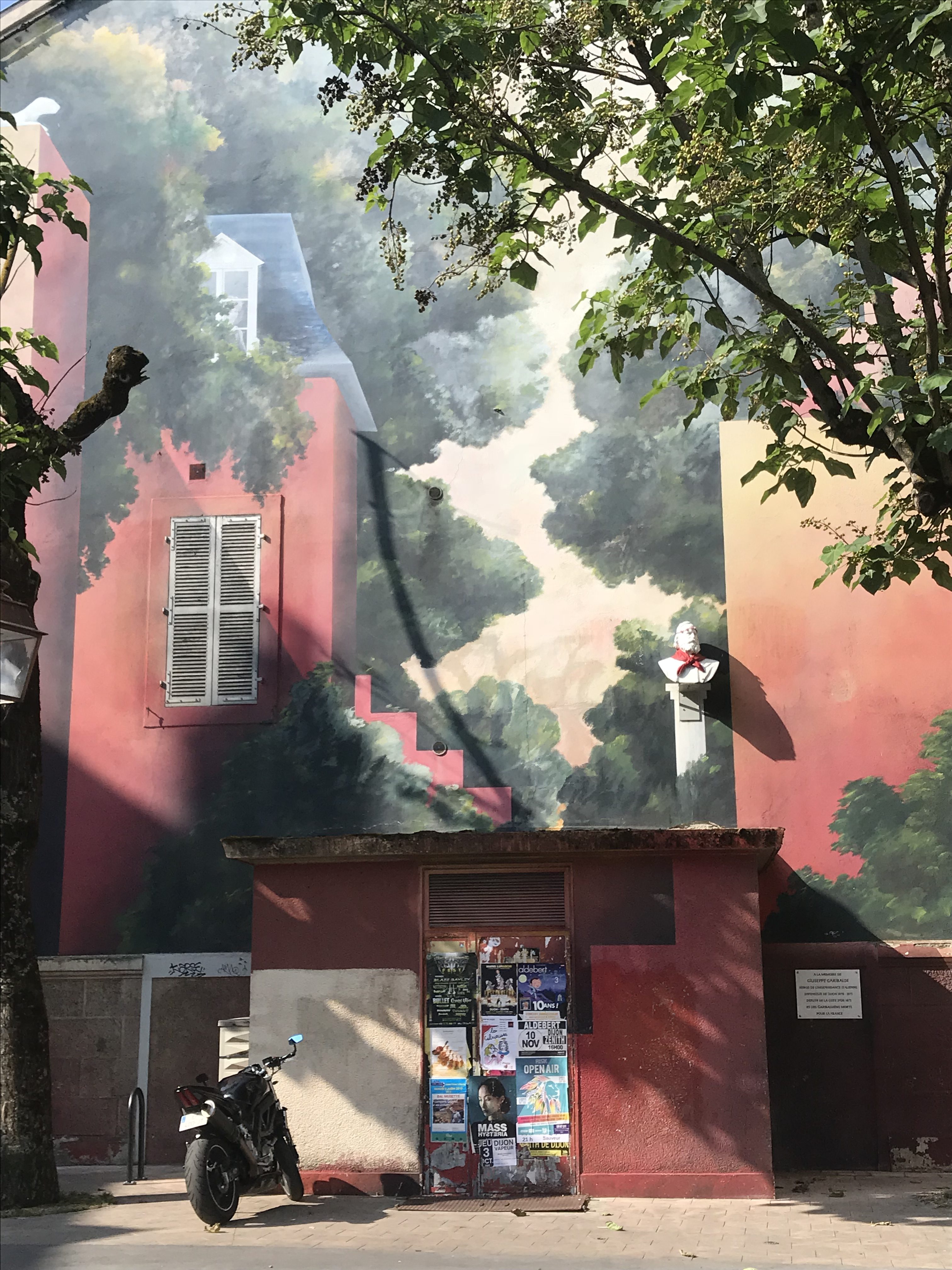
It is time to go. Just before we leave we buy mustard – by way of small gifts from Dijon – but we bought them in Monoprix (a cross between Sainsbury’s and Waitrose). We could have bought them in Paris. Although perhaps not the oddly flavoured ones – mustard with Cassis, mustard with curry …
For our final lunch we sit in a local park – the Park Darcy – named after the man who had first devised the method of underground reservoirs to bring water to the city. There is a pretty waterfall splashing into a pond.
We have a ham and tomato baguette. Several people appear to have visited Mr Wok – a nearby establishment – and are skilfully wielding chopsticks. A friendly dog jumps into the water, then comes over to us and shakes itself vigorously. My trousers suffer. And so, in a small damp way, do I.
It is time to go back to Paris.

